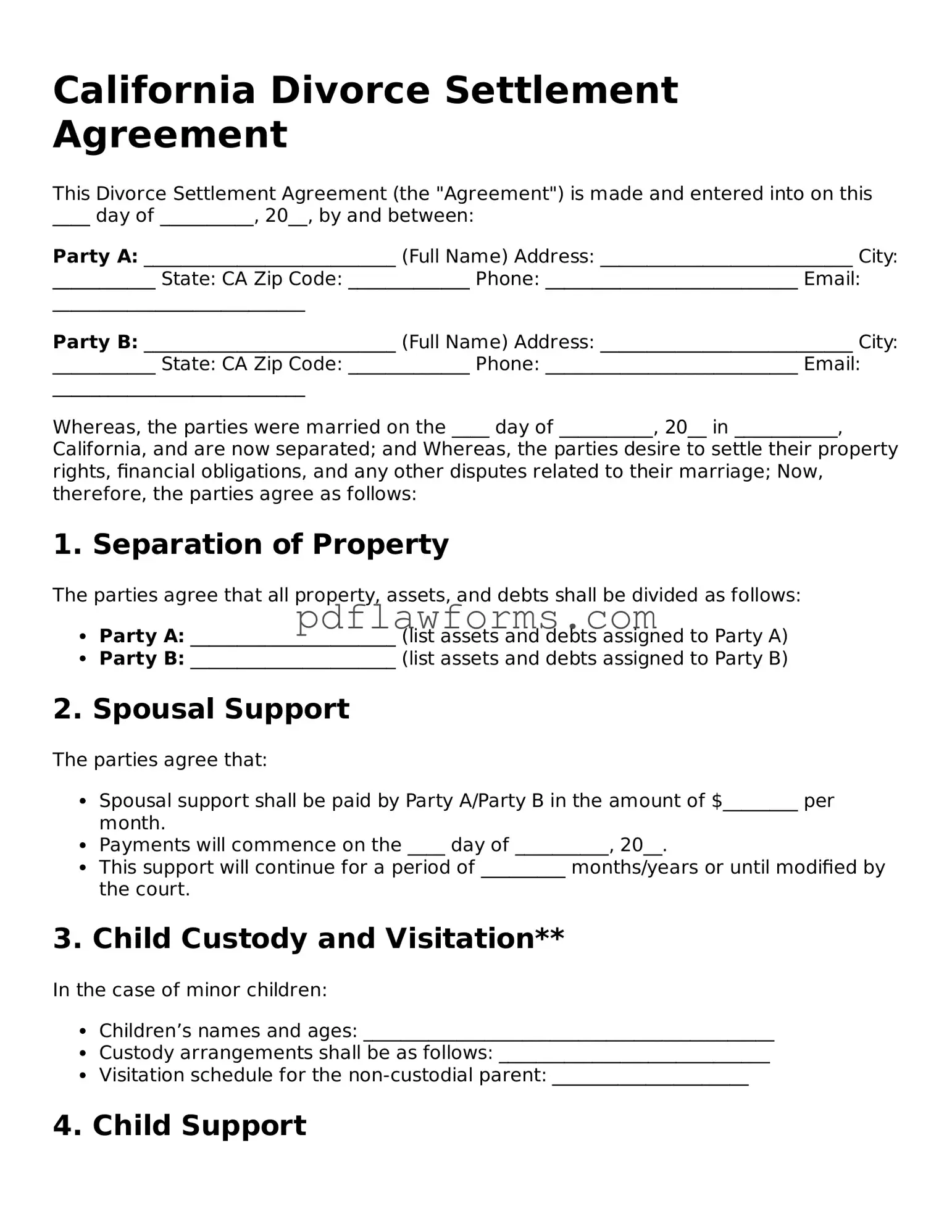Filling out the California Divorce Settlement Agreement form can be a daunting task, and many people make common mistakes that can lead to delays or complications in the divorce process. One frequent error is failing to include all necessary information. It’s essential to provide complete details about assets, debts, and any children involved. Omitting even a small detail can lead to misunderstandings later on.
Another mistake is not being clear about the division of property. The form requires that both parties agree on how to split assets and liabilities. If the agreement is vague or ambiguous, it may cause disputes down the line. Clarity is key—specificity helps ensure that both parties understand their rights and responsibilities.
People often overlook the importance of reviewing the form thoroughly before submission. Errors such as typos or incorrect figures can undermine the validity of the agreement. Taking the time to double-check all entries can prevent future headaches and ensure that the agreement reflects the true intentions of both parties.
Additionally, some individuals neglect to seek legal advice. While it’s possible to fill out the form without a lawyer, consulting with a legal expert can provide valuable insights. They can help identify potential pitfalls and ensure that the agreement complies with California law.
Another common oversight is failing to account for future changes. Life circumstances can change, and it’s wise to consider how the agreement will hold up in the future. For instance, if children are involved, it’s important to include provisions for child support and custody that can adapt to changing situations.
People sometimes forget to include all relevant documents. Supporting documents, such as financial statements or previous agreements, can provide context and clarity. Including these can strengthen the case and make the process smoother for everyone involved.
Some individuals rush through the process, thinking that speed is essential. However, taking the time to carefully consider each section of the form is crucial. Rushing can lead to oversights that may have lasting consequences, so patience is key.
Lastly, many individuals fail to communicate openly with their ex-spouse. A lack of communication can result in misunderstandings and conflicts. Open dialogue helps both parties feel heard and can lead to a more amicable agreement. By working together, couples can create a settlement that meets the needs of both parties and minimizes future disputes.
